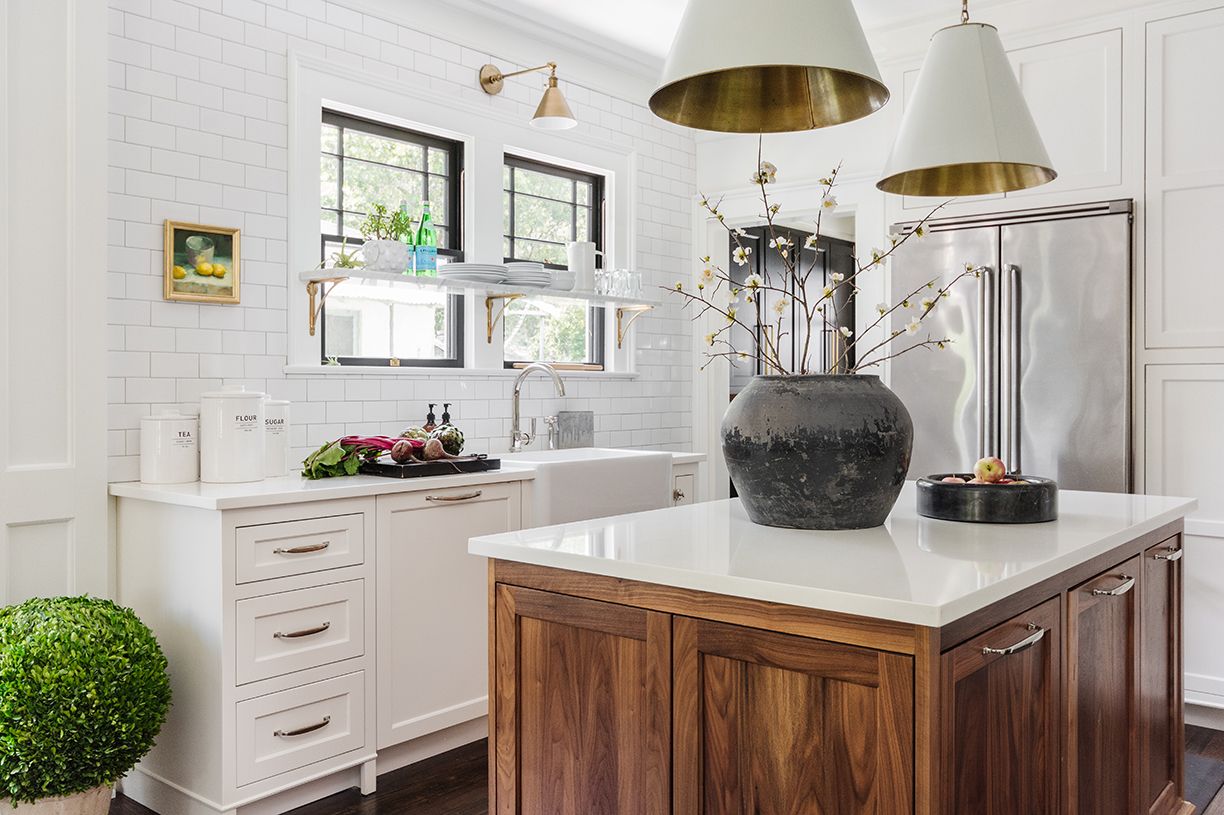Creating a kitchen without windows might seem challenging, but with the right design strategies, you can turn this space into a cozy and functional area. Whether you’re dealing with an existing windowless kitchen or planning a new one, here are some top design tips to help you make the most of your space.
1. Embrace Bright Lighting
Without natural light, artificial lighting becomes your best friend. Layering different types of lighting will create a warm, inviting atmosphere.
- Ambient Lighting: Start with overhead lighting. Recessed lights or a ceiling fixture can provide even illumination. Choose bulbs with a color temperature that mimics daylight to help brighten up the space.
- Task Lighting: Install under-cabinet lights to illuminate countertops and workspaces. LED strip lights or puck lights are excellent options that reduce shadows and make meal preparation easier.
- Accent Lighting: Use pendant lights or decorative fixtures to add character and warmth. Consider lights with dimming capabilities to adjust the ambiance as needed.
2. Use Light and Reflective Materials
Since natural light is absent, it’s crucial to use materials that reflect light and enhance the feeling of brightness.
- Cabinetry and Walls: Opt for light-colored cabinetry and wall paints. Whites, creams, and soft pastels help to make the space feel larger and airier. Glossy finishes can also reflect light effectively.
- Countertops and Backsplashes: Choose reflective or shiny materials like quartz, marble, or glass for countertops and backsplashes. These materials not only add elegance but also bounce light around the room.
3. Incorporate Smart Storage Solutions
In a windowless kitchen, clutter can quickly make the space feel cramped. Implement smart storage solutions to keep everything organized and accessible.
- Vertical Storage: Make use of wall-mounted shelves and cabinets that reach up to the ceiling. This helps maximize storage without taking up additional floor space.
- Pull-Out Drawers and Lazy Susans: Invest in pull-out drawers, lazy Susans, and other innovative storage options that make accessing items easier and keep everything within reach.
4. Integrate Warm Colors and Textures
To counteract the lack of natural light, incorporating warm colors and textures can create a cozy atmosphere.
- Color Palette: Use warm, inviting colors such as rich browns, soft oranges, and muted reds. These colors can help create a comfortable and homely feel.
- Textiles and Accents: Incorporate textured materials like woven baskets, wooden elements, and cozy rugs. Textiles such as cushioned mats and fabric curtains (even if they’re just for decoration) add warmth and comfort.
5. Add Greenery and Personal Touches
Bringing in some greenery and personal items can make the kitchen feel more vibrant and lived-in.
- Plants: Choose low-maintenance plants that thrive in low-light conditions, like pothos, snake plants, or succulents. These can add a touch of nature and improve air quality.
- Personal Items: Display personal touches such as family photos, artwork, or decorative items. These elements can create photo opportunities that make the space feel more personalized and less sterile.
6. Opt for Efficient Layout and Appliances
Designing a functional layout is essential in any kitchen, but it becomes even more crucial in a windowless space where every inch matters.
- Work Triangle: Design the kitchen layout around the work triangle concept—ensuring that the sink, stove, and refrigerator are efficiently positioned for ease of use.
- Compact Appliances: Choose appliances that are compact yet efficient. Built-in appliances can save space and contribute to a cleaner look.
7. Consider Air Quality and Ventilation
Without windows, ensuring proper ventilation is vital to maintain a comfortable cooking environment.
- Range Hoods: Install a high-quality range hood that effectively removes smoke, odors, and grease from the air. Look for models with good filtration systems.
- Air Purifiers: Use air purifiers to enhance air quality and reduce cooking odors. Select models designed for kitchens to handle grease and moisture effectively.
Conclusion
Designing a windowless kitchen presents unique challenges, but with thoughtful planning and creative solutions, you can achieve a space that is both cozy and functional. By focusing on lighting, reflective materials, smart storage, warm colors, and personal touches, you can create an inviting kitchen that feels bright and welcoming. Efficient layout and proper ventilation are also key to ensuring the space remains practical and comfortable. Embrace these design tips to transform your windowless kitchen into a delightful culinary haven.
Q&A
1. What challenges are presented by designing a windowless kitchen?
Designing a windowless kitchen presents challenges such as limited natural light and ventilation. However, with thoughtful planning and creative solutions, these challenges can be overcome to create a functional and cozy space.
2. How can lighting help in a windowless kitchen?
Lighting is crucial in a windowless kitchen to compensate for the lack of natural light. Using layered lighting, such as task, ambient, and accent lighting, can brighten the space and make it feel more inviting.
3. What materials should I use in a windowless kitchen to enhance brightness?
Reflective materials, such as light-colored countertops, glossy tiles, or stainless steel appliances, can help maximize light and make a windowless kitchen feel brighter and more open.
4. Why is efficient layout important in a windowless kitchen?
An efficient layout is essential in a windowless kitchen to ensure the space remains functional and comfortable. A well-organized layout maximizes available space and ensures smooth workflows, especially in a smaller or more enclosed environment.
5. How can I make a windowless kitchen feel cozy and inviting?
To make a windowless kitchen feel cozy and inviting, use warm colors, add personal touches like decorative items or plants, and incorporate smart storage solutions to reduce clutter. These elements can create a welcoming atmosphere despite the lack of natural light.

